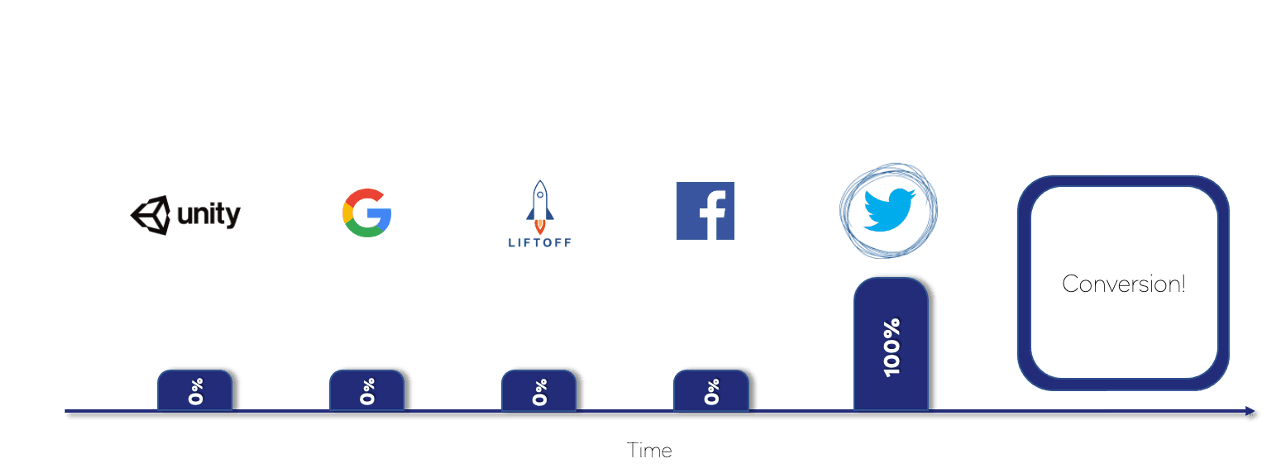Solutions
Teams
Built for your whole team.
Industries
Trusted by all verticals.
Mediums
Measure any type of ad spend
Platform
Use Cases
Many Possibilities. One Platform.
AI and Automation
The Always-on Incrementality Platform
Teams
Built for your whole team.
Industries
Trusted by all verticals.
Mediums
Measure any type of ad spend
Use Cases
Many Possibilities. One Platform.
AI and Automation
The Always-on Incrementality Platform
Attribution is a term that describes the process of matching two data points, such as clicks to installs, or impressions to installs.
Incrementality is a term for measurement of the true effectiveness of advertising activities.
Incrementality measurement uses a statistical approach rather than trying to attribute on a singular user level.
Last Touch Attribution, also referred to as last-click, is an attribution model which gives 100% credit to the last ad a user interacted with before conversion.

With recent changes in mobile operating systems and browsers - user level identification is becoming impossible and moving to a more aggregate cohort level.
While this move makes conversion level matching impossible - the mechanics of this method remain the same where attribution happens based on “last touch” , while the reporting of attributed conversions would be reported in aggregate form rather than a single conversion.
With user identification being deprecated, marketers who relied on user level tracking and attribution must adapt to a new reality. Attribution has always been a critical part of advertising. Even without the user identification, marketers still have ways to attribute advertising activities to sales results. What is the difference between attribution and incrementality?
Incrementality measurement a method to understand the true value of advertising spend.

Incrementality measurement does not assume to replace attribution. Both are used for different purposes. Incrementality measurement relies on whatever an advertiser deems as a source of truth. In other words, as a source of data to indicate if results generated are a) incremental , b) of any value.
Incrementality attribution can provide insights in granular levels over campaigns, demographics, vendors, geo location, contextual features. These insights can be used in an operational - tactical level.
Last touch attribution will continue being available on an aggregate level (such as campaign), allowing marketers to use last touch as a proxy for optimization of creative, and engagement.
The deprecation of user identification forced digital marketers to adapt. The good news is that this adaptation can lead to better outcomes. Focusing on incrementality, rather than last touch, will help marketers unlock the full value of their marketing budget.

Not only do we need to move from last touch to multi-touch attribution, but the next step is focusing on incrementality. Even once all the touch points are known, it’s crucial to know which touch points truly drove conversion and which were just noise. This is a very challenging problem to solve, but has begun to garner increased attention. (LUMA Partners, DSM 2019)